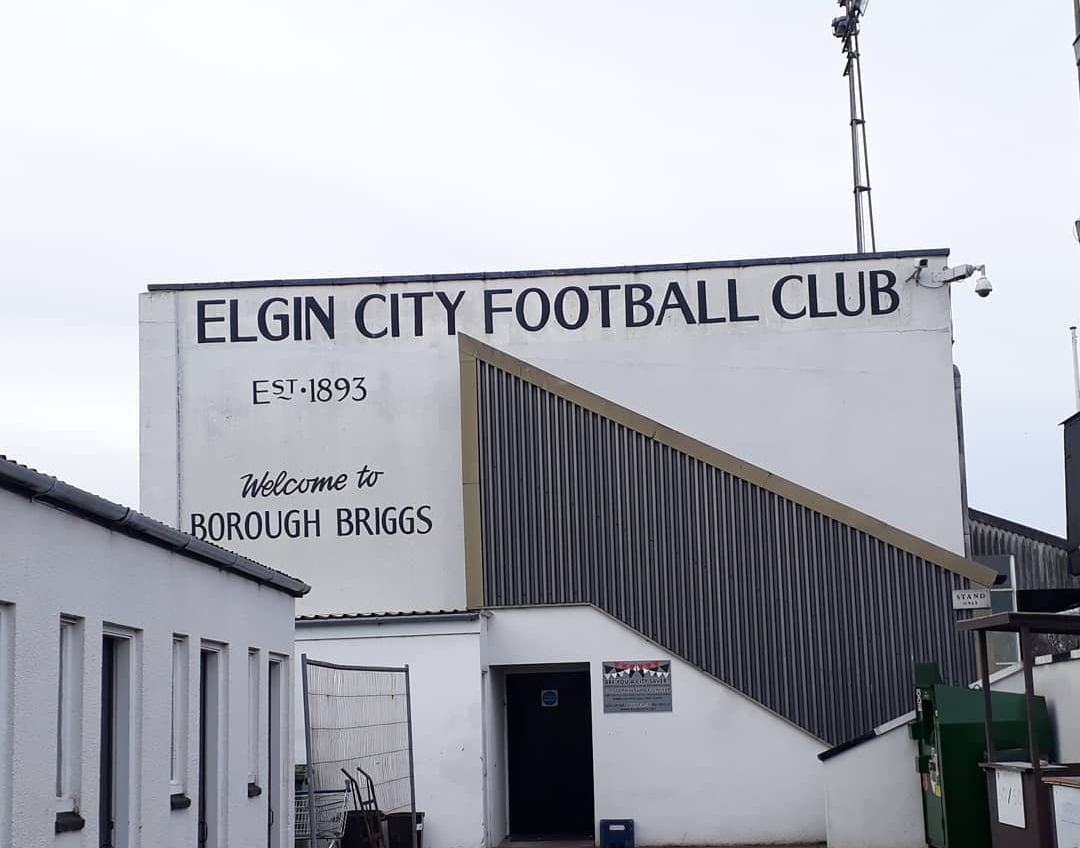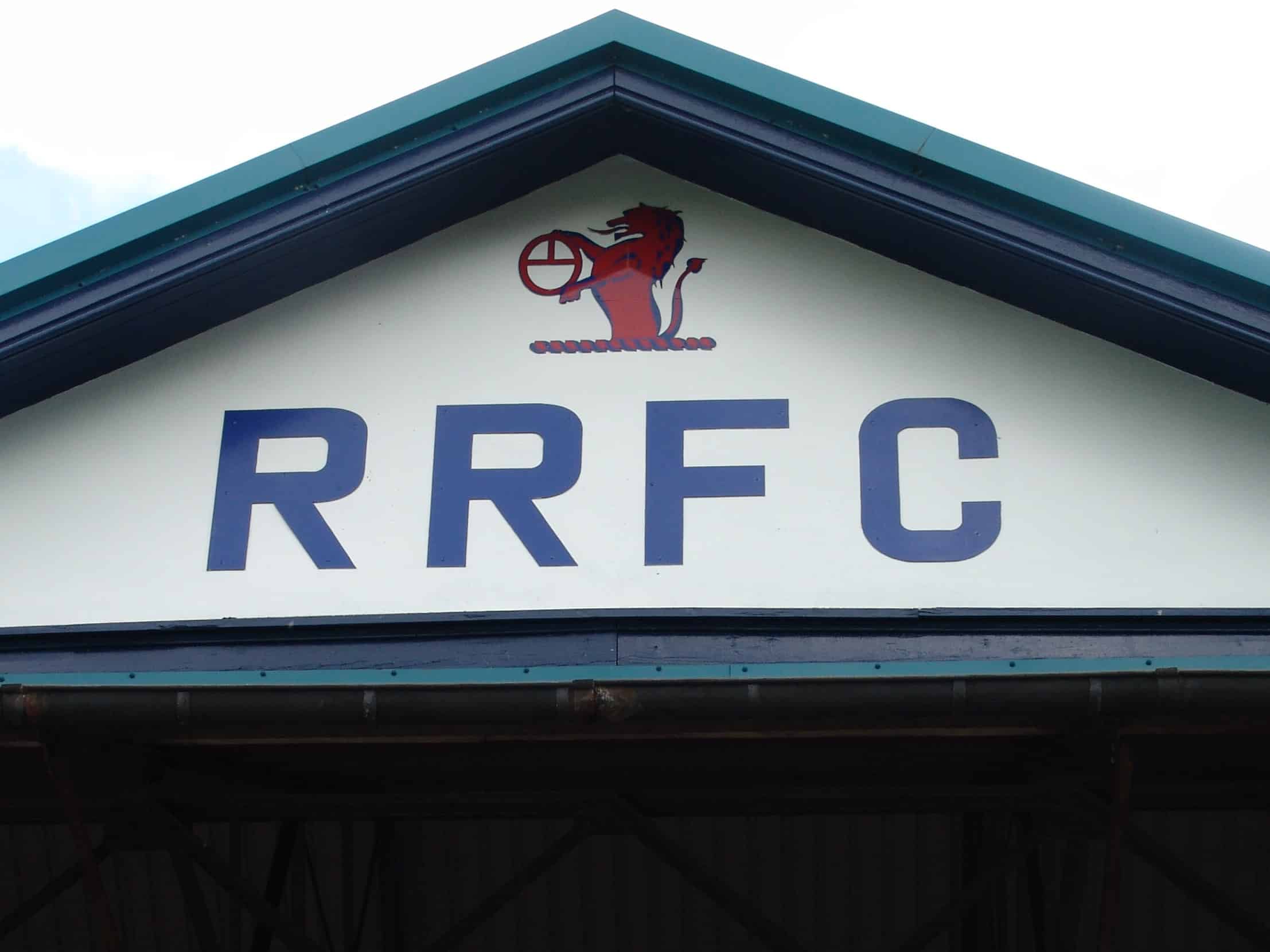A fan’s guide – the club from early doors to today
The Warriors of Stenhousemuir FC, formed in 1884 and clad in maroon since 1900, are the kind of club that does credit to Scottish football. Despite never reaching the league elite in 140 years of activity, Stenny have stuck to their guns, running out week after week, usually in the third tier or formerly the elongated Second Division.
More recently, Saturdays have involved fourth-flight football, the last relegation coming in 2019.
And while this kind of dedication and loyalty on pitch and terrace often attracts a Sylvester McMonkey McBean character who swoops in, promises success, sweeps up and sails away again, in Stenhousemuir’s case, this can’t happen. The club has been a Community Interest Company since 2009. Any profits are used for the good of Stenhousemuir FC – nobody can come in and raid the piggy bank.
The Warriors last came within sight of major silverware in 1903, a 4-1 defeat to eventual winners Rangers in the Scottish Cup semi-final.
In the league, Stenhousemuir set up camp in the old, 20-team Division Two, finishing fourth three times in succession in the 1930s, and twice third in 1959 and 1961, four agonising points from local rivals Falkirk.

Never relegated, a logistical impossibility at the time, Stenhousemuir fell back after the 1975 Scottish League restructure that created smaller divisions. No longer able to hide among 20 teams, the Warriors kept a low profile in the third tier until the arrival of a certain Terry Christie as manager in 1992.
In his trademark duffle coat and still a school headmaster, Christie had worked wonders at little Meadowbank during the 1980s. There his mainstay in defence was Graeme Armstong. Christie signed him up straight away. Having steered Stenhousemuir to third place in the third tier in his first full season, thus avoiding the fourth tier that was being created in 1994-95, Christie had his players perform miracles to beat St Johnstone 4-0 and Aberdeen 2-0 in the Scottish Cup.
Reaching the quarter-finals for the first time since 1950, Stenhousemuir duly fell to Hibernian – but a fire had been lit. The following season, joined by former Chelsea star Eamonn Bannon who pulled strings at the back, the Warriors won through to the final of the Scottish Challenge Cup.

That year the tournament, for clubs outside the top flight, featured both teams from Dundee. Beating the Dark Blues 3-0 at Dens Park in the quarter-final, Stenhousemuir faced Dundee United in the final in Perth. Protected by Armstrong and Bannon for 120 minutes, on-loan keeper Roddy McKenzie then saved the first penalty in the shoot-out, by top United goalgetter Craig Brewster. With all other spot-kicks converted, the Warriors were the winners, and could lift a trophy for the first time since the Scottish Qualifying Cup in 1902.
Armstrong went on make 910 league appearances, a Scottish record. His 1,000th first-class game came against Rangers at Ibrox, a creditable 2-0 defeat – also Christie’s last match as manager.
Armstrong took over to lead Stenhousemuir to promotion from the fourth tier in 1999. A subsequent string of defeats, including a 7-0 hammering at Clyde, proved a sorry farewell. Armstrong followed Christie to Alloa as his assistant, and even came on as sub at 44.
Back at Stenhousemuir, Armstrong’s successor, Brian Fairley, brought in Isaac English to partner Martin Mooney up front, keeping Ochilview Park memorably entertained – highlights would otherwise be few and far between in the 2000s.

A right-back under Terry Christie at Meadowbank, manager John Coughlin arrived as manager in 2007. Two years later, his side won a penalty shoot-out in front of 1,500 at Ochilview to beat Cowdenbeath in the Third Division play-offs.
Between 2009 and 2019, ’Muir didn’t move from their third-tier lair. Former Warriors midfielder Brown Ferguson took over as manager in 2015, Jamie McCormack saving his bacon by striking two key goals in the subsequent relegation play-offs, one in extra-time against East Fife, another at Hampden against Queen’s Park.
A leaky defence almost put the Warriors in the same situation in 2015-16, Stenhousemuir finishing a point above doomed Cowdenbeath. The inevitable happened the following season, then again in 2019, interspersed by a late play-off win over Queen’s Park at Hampden to jump back for a brief stay in League One.
Stenny fans will be hoping that the charge up the table under ex-Everton and Scotland left-back Gary Naysmith in 2023-24 will result in a longer stay in ‘Muir’s natural habitat of League One.
Ground Guide
The field of dreams – and the story behind it

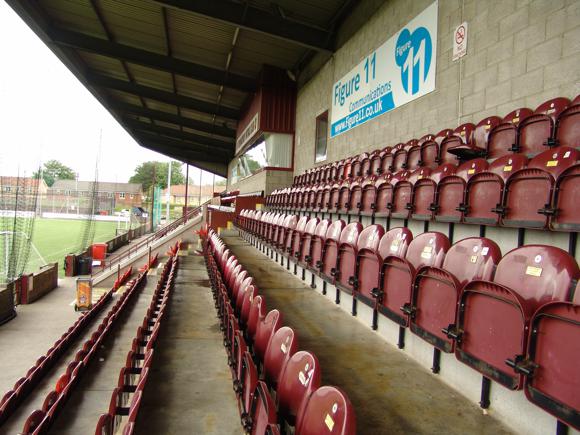

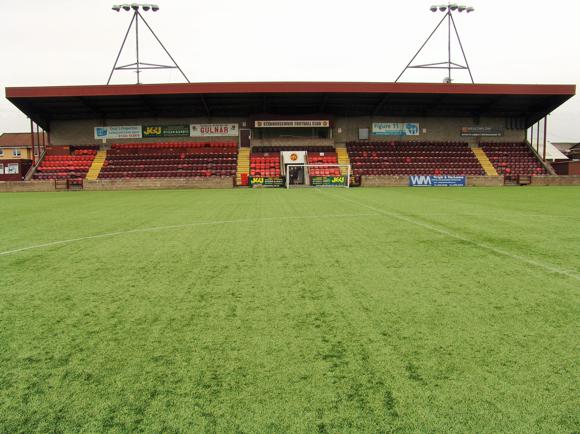
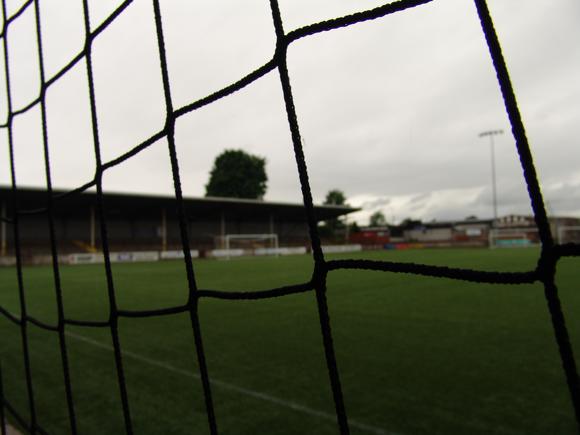


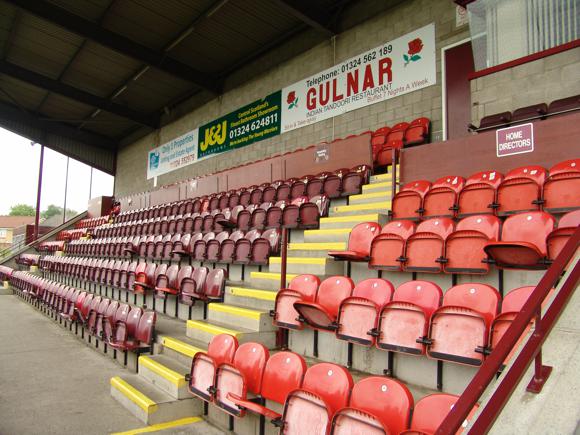


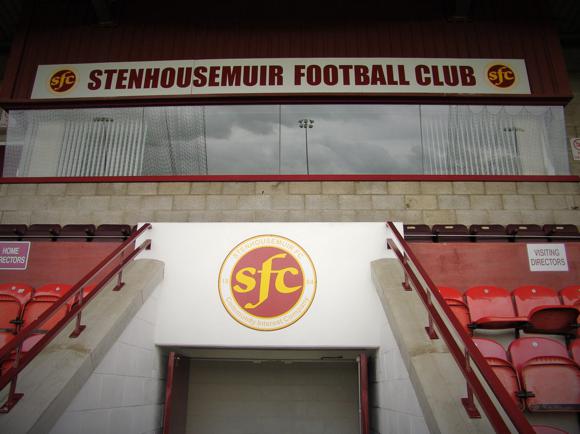
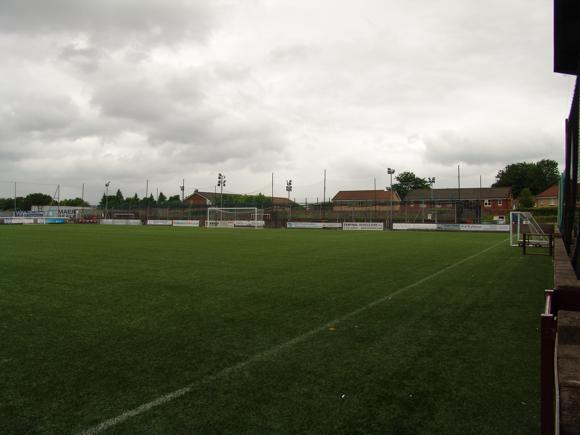
Ochilview Park has recently been home to two teams: Stenhousemuir and East Stirlingshire. Each could thank Norway for the main stand that dominates the ground, providing its only seating – for most league games, unsegregated. The Norway Stand was opened in 1996.
Since then, the North Stand opposite had to be knocked down for safety reasons. This leaves the roofed standing area behind the east goal for visiting supporters, and the Tryst Road End, christened the Donald Smillie Enclosure in December 2023 after a lifelong, pro-active fan on the occasion of his 90th birthday. It’s a roofed terrace behind the west goal – the supporting wall behind the east goal was partly built by Smillie’s own hands.
Capacity is just under 4,000. In theory, this can be increased by using the space where the North Stand used to be. In practice, crowds rarely break four figures. The pitch, like so many in Scotland, is artificial.
getting here
Going to the ground – tips and timings

The nearest train station is Larbert – it’s a 10min walk along Main Street, turning left at the third set of traffic lights, Tryst Road.
Four McGill’s buses cover the same journey, the 2, 2A, 7 and 8 – the Tryst Road stop is four along from the station.
The sat nav code for Ochilview Park is FK5 4QL. There is no car park at the stadium. Street parking is available nearby, for example, around Larbert East Church (Kirk Avenue, FK5 4QB) and on/off King Street (FK5 4HS).
Driving here, ignore the ‘Football Traffic’ signs – they lead to Falkirk.
getting in
Buying tickets – when, where, how and how much

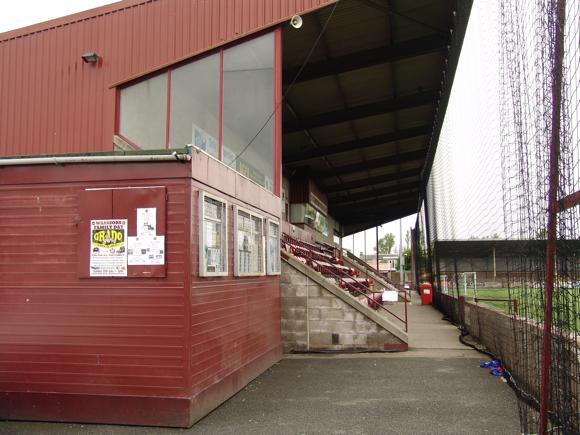
Stenhousemuir offer online purchases through Fanbase. On match days, it’s cash-only admission.
Seating or standing is £15, £10 discounted for over-65s and 16-21s, £5 for under-16s.
what to buy
Shirts, kits, merchandise and gifts

A modest, match-day stall offers maroon souvenirs by the main stand. Actually, the current version of the home kit is referred to as ‘burgundy’, and has a white-and-tartan trim. Away is white, with a lime-and-tartan trim.
The contemporary lower-case sfc crest also features on T-shirts, tracksuits and hoodies.
Where to Drink
Pre-match beers for fans and casual visitors

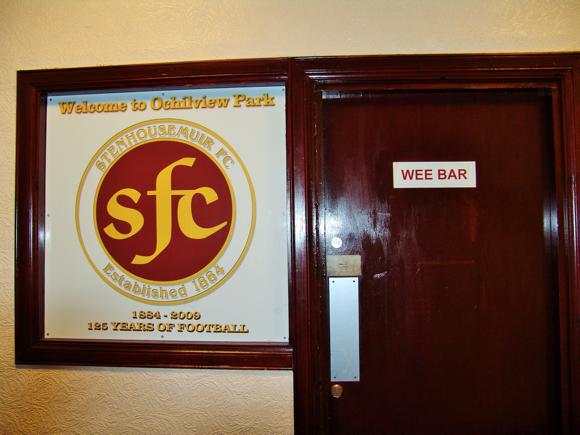

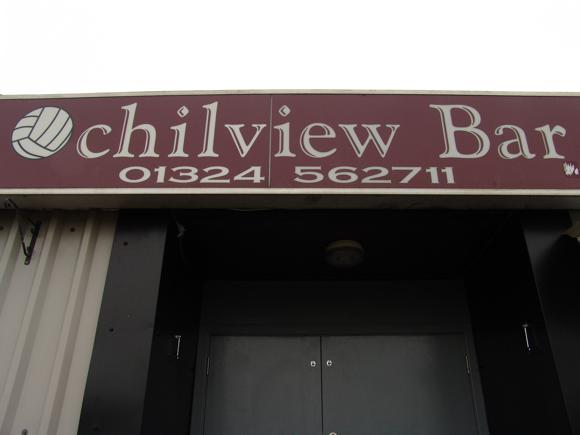
Pubs on Main Street are only a short walk to the ground – but there are two bars within Ochilview itself. Within the main entrance to the Norway Stand, the Wee Bar is just that, a cosy spot decorated with pennants from visiting teams, with flat-screen TVs to follow the pre-match build-ups and football results before and after the game. Match-day only opening times are also accommodating, allowing for plenty of pre- and post-game banter and bevvies.
Accessed from a pathway off Tryst Road, giving out onto the pitch where the former North Stand meets the roofed terrace end, the Ochilview Bar sometimes runs during the week, with plenty of sport on TV, hot and cold snacks, and a selection of Innis & Gunn beers, matured in whisky barrels.
Both stadium outlets welcome away supporters.























